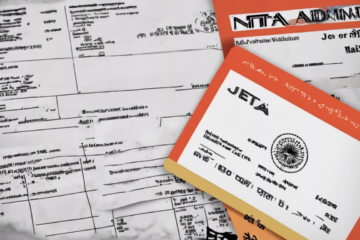Bharat Bandh: All You Need to Know

Bharat Bandh: All You Need to Know
Introduction
Bharat Bandh is a term that has become quite prevalent in Indian sociopolitical discourse. It refers to a nationwide strike or shutdown organized by various political parties, trade unions, or social organizations to protest against certain policies or issues. These bandhs often lead to the suspension of normal activities across the country, including businesses, public transportation, educational institutions, and more.
History of Bharat Bandh
The concept of Bharat Bandh has its roots in the Indian independence movement when strikes and protests were used as a means to challenge British colonial rule. Over the years, it has evolved as a tool for expressing dissent and demanding action from the government on various issues.
Reasons for Bharat Bandh
Bharat Bandhs are usually called to protest against government policies, price hikes, economic reforms, labor laws, or any other social or political issue that affects a significant section of the population. These strikes are seen as a way to garner attention and force authorities to address the grievances of the people.
Impact of Bharat Bandh
During a Bharat Bandh, normal life is disrupted as shops remain closed, public transport services are halted, and educational institutions are shut. The aim is to showcase the widespread support for the cause and create pressure on the government to take action. However, these bandhs also result in significant economic losses and inconvenience to the general public.
Legal Aspects of Bharat Bandh
While Bharat Bandhs are a popular form of protest in India, they often raise questions about their legality and ethicality. Critics argue that disrupting public life infringes on the rights of individuals who may not support the cause of the strike. The Supreme Court of India has issued guidelines to regulate the conduct of these bandhs, emphasizing the need to ensure that essential services are not disrupted.
Recent Bharat Bandhs
In recent years, Bharat Bandhs have been called by various political parties and organizations to protest against issues such as fuel price hikes, agricultural reforms, and changes in labor laws. These strikes have sparked debates about the efficacy of such protests in bringing about real change and addressing the concerns of the public.
How to Navigate a Bharat Bandh
During a Bharat Bandh, it is advisable to stay informed about developments through reliable sources, avoid unnecessary travel, and stock up on essential supplies. It is also essential to respect the rights of individuals who choose not to participate in the strike and ensure that any form of protest remains peaceful and within the boundaries of the law.
Conclusion
Bharat Bandh is a powerful means of expressing dissent and mobilizing public opinion on critical issues. While it serves as a reflection of the democratic ethos of India, it also raises important questions about its impact on the economy, public welfare, and legal framework. As we navigate through the complexities of such nationwide strikes, it is crucial to strike a balance between the right to protest and the need for continuity in public life.
Frequently Asked Questions (FAQs)
- What is the difference between a bandh and a strike?
-
A bandh is a shutdown of businesses and public services organized by political parties or social groups, while a strike is a form of protest where workers stop working to demand better conditions or rights.
-
Are Bharat Bandhs effective in achieving their objectives?
-
The effectiveness of a Bharat Bandh in achieving its objectives varies. While it can attract attention and create pressure on the government, its long-term impact on policy changes is debatable.
-
Can I be penalized for not participating in a Bharat Bandh?
-
Participation in a strike or bandh is usually voluntary, and individuals cannot be penalized for choosing not to participate. However, the legalities can vary depending on the specific circumstances.
-
How are essential services affected during a Bharat Bandh?
-
Essential services such as hospitals, emergency services, and transportation are usually exempt from bandhs to ensure that critical functions continue uninterrupted.
-
What are the limitations of calling for frequent Bharat Bandhs?
-
Frequent bandhs can disrupt normal life, result in economic losses, and strain public resources. They can also lead to a sense of fatigue among the public and diminish the impact of future strikes.
-
Is there a regulatory framework for organizing Bharat Bandhs?
-
The Supreme Court of India has issued guidelines for organizing bandhs to ensure that essential services are not disrupted and that the rights of individuals who do not support the strike are respected.
-
What can the government do to address the grievances that lead to Bharat Bandhs?
-
The government can engage in dialogue with protesting parties, address the concerns raised by the public, and work towards finding amicable solutions to prevent the escalation of conflicts that often result in nationwide strikes.
-
Are Bharat Bandhs unique to India, or do other countries have similar forms of protest?
-
While nationwide strikes like Bharat Bandhs are more commonly seen in India, other countries also have forms of protest where businesses and services are shut down to demonstrate dissent or demand specific actions from the government.
-
How can individuals support or oppose a Bharat Bandh without participating in it?
-
Individuals can express their support or opposition to a bandh through social media, peaceful demonstrations, or engaging in discussions with elected representatives. It is essential to respect the choices of others and exercise one’s right to freedom of speech and expression.
-
What are the long-term effects of frequent Bharat Bandhs on the economy and social fabric of the country?
- Frequent bandhs can lead to economic instability, hinder growth, disrupt supply chains, and create social divisions. It is crucial for stakeholders to find alternative mechanisms for expressing dissent and addressing grievances to maintain a balance between democratic rights and public welfare.





